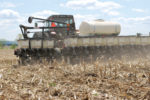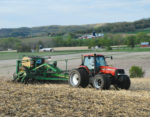Paul Schaffert has faced his no-till challenges through the decades, and he’s learned from both the ups and the downs. He offers his advice here.
Having no-tilled since 1972, Paul Schaffert has learned a few things while growing corn, wheat, soybeans, sunflowers, milo and grain sorghum on a 2,000-acre irrigated and dryland farm in Indianola, Neb. The lessons have come even harder recently, because the area, which normally receives 10 to 17 inches of rain each year, has been suffering through a drought for the past several years and irrigation is now restricted to 13 inches per year.
Read More











